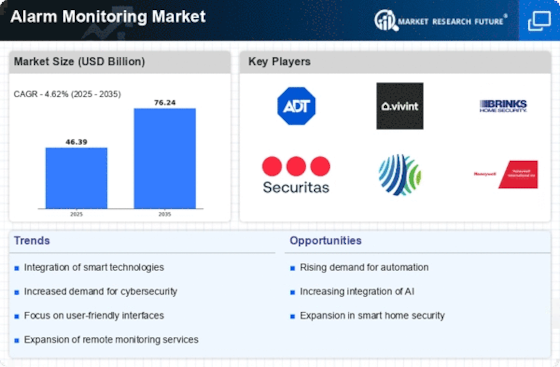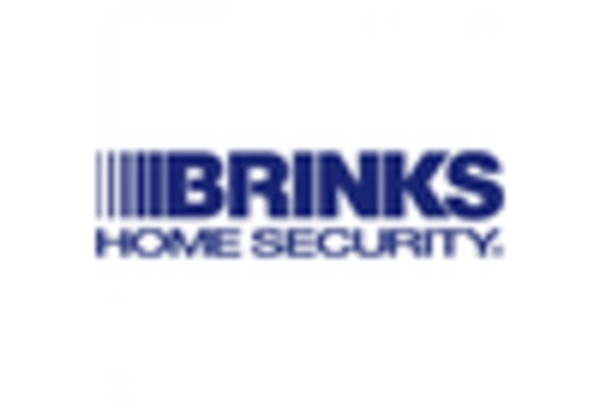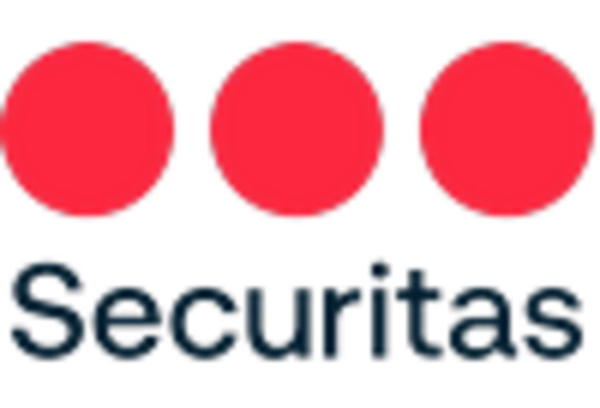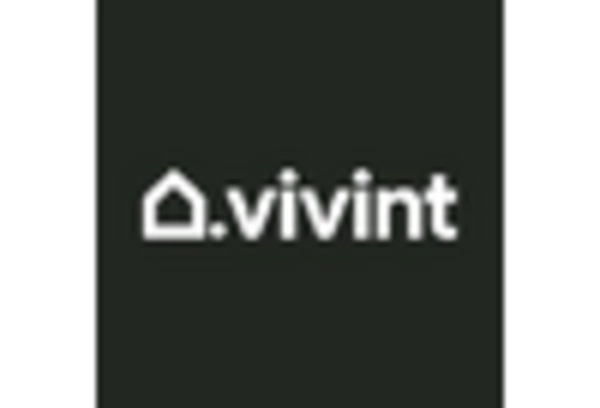Rising Crime Rates
The Alarm Monitoring Market appears to be significantly influenced by the rising crime rates across various regions. As urbanization continues to expand, the incidence of property crimes, including burglary and vandalism, has shown an upward trend. This escalation in criminal activities drives consumers and businesses alike to seek enhanced security solutions. According to recent statistics, property crime rates have increased by approximately 5% in certain metropolitan areas, prompting a surge in demand for alarm monitoring services. Consequently, this trend is likely to bolster the growth of the Alarm Monitoring Market, as individuals and organizations prioritize safety and security measures to protect their assets.
Technological Advancements
Technological advancements play a pivotal role in shaping the Alarm Monitoring Market. The integration of Internet of Things (IoT) devices, artificial intelligence, and machine learning into alarm systems has revolutionized the way security is monitored and managed. These innovations enable real-time alerts, remote monitoring, and automated responses, enhancing the overall effectiveness of alarm systems. Market data indicates that the adoption of smart alarm systems has increased by over 30% in the last year, reflecting a growing preference for advanced security solutions. As technology continues to evolve, the Alarm Monitoring Market is poised for further growth, driven by the demand for more sophisticated and user-friendly security options.
Regulatory Compliance and Standards
Regulatory compliance and standards are becoming increasingly relevant in the Alarm Monitoring Market. Governments and regulatory bodies are implementing stringent guidelines to ensure the effectiveness and reliability of alarm systems. Compliance with these regulations not only enhances consumer trust but also encourages manufacturers to innovate and improve their offerings. For instance, adherence to standards such as UL 60950 for alarm systems is becoming a prerequisite for market entry in many regions. This regulatory landscape is likely to drive the growth of the Alarm Monitoring Market, as companies strive to meet compliance requirements while delivering high-quality security solutions.
Increased Awareness of Security Needs
The heightened awareness of security needs among consumers and businesses is a crucial driver for the Alarm Monitoring Market. As incidents of theft and property damage become more widely reported, individuals are increasingly recognizing the importance of proactive security measures. Surveys indicate that approximately 70% of homeowners now consider alarm systems a necessity rather than a luxury. This shift in perception is likely to fuel the demand for alarm monitoring services, as people seek reliable solutions to safeguard their properties. Furthermore, businesses are also investing in alarm systems to protect their assets and ensure the safety of their employees, thereby contributing to the growth of the Alarm Monitoring Market.
Growing Demand for Remote Monitoring Solutions
The growing demand for remote monitoring solutions is a significant driver of the Alarm Monitoring Market. As lifestyles become increasingly mobile, consumers are seeking ways to monitor their properties from anywhere in the world. Remote access to alarm systems via smartphones and other devices has become a key feature that many users expect. Market analysis suggests that the segment of remote monitoring services has expanded by nearly 25% in the past year, indicating a strong consumer preference for flexibility and control over their security systems. This trend is likely to continue, further propelling the growth of the Alarm Monitoring Market as more individuals and businesses adopt remote monitoring capabilities.


















Leave a Comment